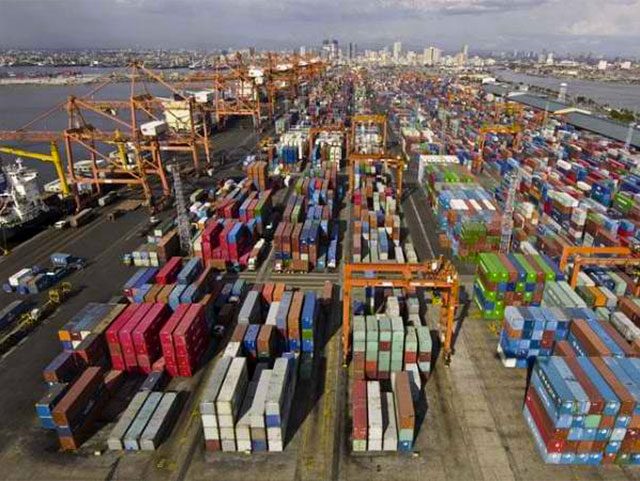SUMMARY
This is AI generated summarization, which may have errors. For context, always refer to the full article.

MANILA, Philippines – The situation at the ports is “improving” since the truck ban was lifted, but problems remain, according to Secretary to the Cabinet Rene Almendras.
Almendras said on Wednesday, October 1, that from high utilization rates in Manila ports, the number has since dropped to 85% at the Asian Terminal Inc’s South Harbor from 93.28%, and 95.5% at the International Container Terminal Services Inc’s Manila International Container Terminal (MICT).from 102%. Utlization rates measure how much of the port’s capacity is being used.
“We have successfully addressed the congestion since it’s below 100, technically, you can say it’s not congested, although the ideal level is still in the lower 80s. So we hope to reach that level in about a month’s time,” Almendras said.
He also pointed out that the Batangas port is now at 80% utilization rate from just 10%, while Subic is at 42%, “showing that shippers are now going through Batangas and to Subic as an alternative.” The move to use these ports has helped decongest Manila ports, as well as ports in Shanghai, Kaohsiung, Singapore, and Hong Kong, he said.
The shipment of goods in and out of the country got caught in a gridlock when Manila imposed a truck ban starting February this year.
In August, the Philippine Statistics Authority reported a decline in imports from $4.889 billion in June 2013 to $4.715 billion in June this year.
Economists pointed out that the ban caused an increase in the prices of some basic commodities as many companies struggled in transporting their imported raw materials to their factories. But for many months Manila City officials stood their ground, saying the ban was needed to ease traffic in the capital and nearby cities.
While the ban lasted, a Cabinet cluster on port congestion sought measures to address port congestion. Finally on September 13, Manila lifted the daytime truck ban – heeding calls from the national government, business and other sectors.
Almendras, who was appointed by President Benigno Aquino III to lead the task force to address port congestion, clarified that the problem is not yet over.
Empty containers, ‘fees’
“Are we through with the problem? No, we’re not yet through. Why? Because we expect our peak inflows or imports October and November. Why? Because the imports were supposed to come in August and September. [But] because the situation then was quite difficult, the ones being held back are coming now,” he said.
This means the ports are processing more inflows than usual.
Almendras said the government is also addressing the problem of empty containers. “There is a huge volume of empty containers that we need to move out. Obviously, there is a limited capacity of the shipping lines,” he said.
Almendras said new container yards are being opened to make space to store the empty containers, as to avoid the continued storage of these cargos in the ports.
Almendras said the government also discovered “unfair practices” wherein fixers have started to collect between P500 to P1,500 from truckers to allow them to enter the port area. Currently, there is a schedule for deliveries to avoid the lining up and congestion of trucks outside the port.
“There are other personalities both in government and outside government who are taking advantage of the situation to charge a little bit more here and a little bit more there,” he said.
In response, Almendras said the Department of Trade and Industry (DTI) will call a meeting with shipping lines to clarify procedures, charges and fees so everyone is on the same page. A second meeting between the DTI and importers will then follow, wherein the DTI will explain the process to allow them to distinguish if they are being taken advantage of. – Rappler.com
Add a comment
How does this make you feel?
There are no comments yet. Add your comment to start the conversation.